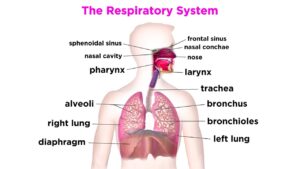As we’ve seen a decline in respiratory illnesses like tuberculosis and pneumonia over the decades, many people have not had serious concern for or even understanding of their respiratory health. The events of the past two years have done much to challenge what many have taken for granted. Since the COVID-19 outbreak, the respiratory systems of millions have been impacted. For some, this damage is permanent. As simple as breathing may seem, there are many functions and parts of the body that help maintain a strong and healthy respiratory system.
Many individuals think the only function of the respiratory system is the ability to help the body breathe, and don’t consider this function to be particularly complex. While other functions provided by the respiratory system include the ability to talk and smell, just because breathing is an unconscious activity does not mean it is a simple one. When inhaling, the body is receiving its most essential substance, oxygen, as body cells feed on oxygen in order to keep a body living. When exhaling, the body is releasing waste and toxic gases such as carbon dioxide in order to keep not only the airways but blood flow clean as well.
Starting from the nose and ending with the lungs, there are many organs and tissues that make up the respiratory system. Starting with the airways, the two openings that take in the air are the nose and the mouth. This air then passes through the sinuses, space between bones in the head, that keep the nose clean and help regulate the temperature and humidity of the air. This air then passes through a tube in the throat called the pharynx that then delivers it to the trachea that connects the throat to the lungs. Within the lungs are bronchial tubes or bronchi that transport air in and out of the lungs to supply the body with oxygen within the blood. The bloodstream within the lungs delivers the inhaled oxygen to the organs and tissues that need it.




